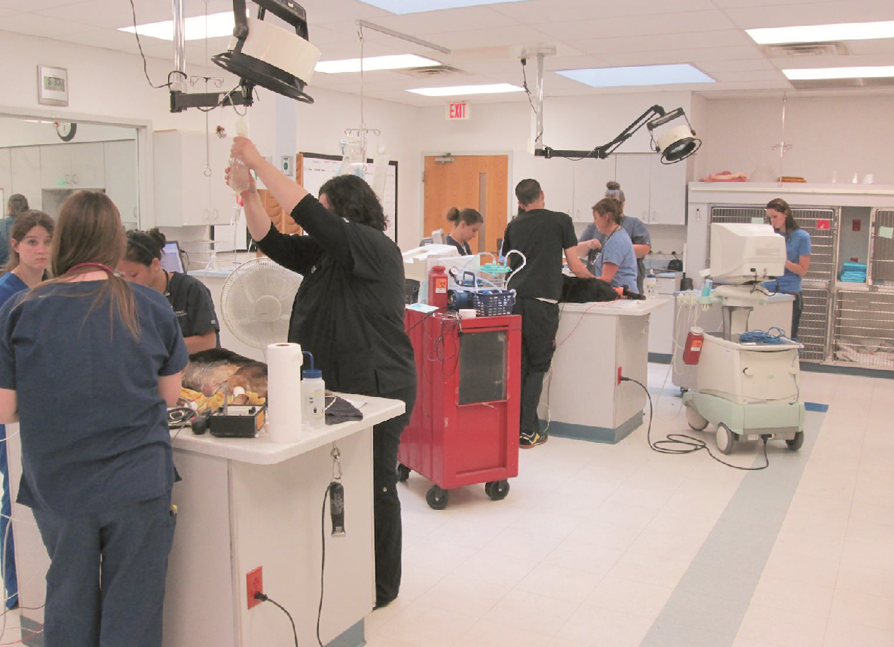Small Animal Emergency and Critical Care Medicine: Self-Assessment Color Review, Second Edition, Q&A 01
| This question was provided by CRC Press. See more case-based flashcards |

|
Student tip: This case is good for showing an abstract way to apply theory. |
On a slow night at the veterinary emergency room the following animals arrive within 5–10 minutes of one another (1). 1. 3-year-old male neutered cat straining to urinate for the past 4–5 hours. He has a small but inexpressible bladder, is alert, and is uncomfortable with a normal TPR. 2. 14-year-old female spayed cat having difficulty breathing for the past 2 days. She has dull lung sounds, an asynchronous respiratory pattern, is open-mouth breathing, and has a murmur. Gums are slightly cyanotic in color. 3. 8-year-old small Terrier-cross that was bitten by a larger dog on the right front paw, which he is holding up. Cardiovascular status is stable. 4. 11-year-old Labrador-cross that has collapsed, has a distended abdomen, HR of 190 bpm, and pale gum color. 5. 12-year-old male neutered beagle that has been seizuring for the past hour and has a temperature of 42.8°C (109°F).
| Question | Answer | Article | |
| Put the patients in order of priority for medical therapy. | Patients 2, 5, and 4 may be equally critical, then patient 1, then patient 3.
|
Link to Article | |
| What is your immediate emergency stabilization plan for each patient? | Patient 2 is placed in an oxygen-rich environment and given a mild sedative such as butorphanol IV/IM. Patient 5 has an IVC placed, is given a benzodiazepine with IV fluid administration, has external cooling techniques initiated, and a laboratory emergency database checked. Patient 4 has an IVC placed and is started on low-volume resuscitation and an emergency laboratory database evaluated. Patients 1 and 3 are given analgesic medication pending stabilization of the other patients. Following this, patient 2 has an IVC placed, thoracocentesis is performed with oxygen support, and placed into the oxygen-rich environment. Patient 1 has an emergency laboratory database checked for hyperkalemia, and patient 3 a band-age placed. Following stabilization of patients 5 and 4, patient 1 is unblocked.
|
Link to Article | |
To purchase the full text with your 20% off discount, go to the CRC Press Veterinary website and use code VET18.
